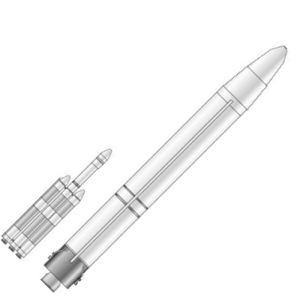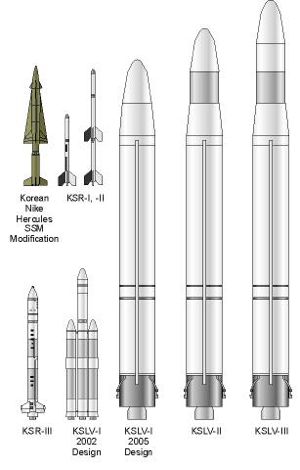
Home - Search - Browse - Alphabetic Index: 0- 1- 2- 3- 4- 5- 6- 7- 8- 9
A- B- C- D- E- F- G- H- I- J- K- L- M- N- O- P- Q- R- S- T- U- V- W- X- Y- Z
KSLV
 KSLV-I 2005 Revised version of KSLV-I, using a derivative of the Russian Angara booster. Credit: © Mark Wade |
Status: Development.
At the time of cancellation in December 2008 processing facilities had been completed at the Naro Space Center in Goheung, and the first Russian lower stage was to have been supplied in January 2009 for handling tests. A single Russian engine had been imported in June 2008.
| KSLV-I 2002 South Korean orbital launch vehicle. In 2002 South Korea announced it was planning to develop a small satellite launch vehicle by 2005, based on technology flown on the KSR-III test vehicle. By 2005 this was replaced by a completely different design, based on the Russian Angara space booster. |
Family: orbital launch vehicle. Country: Korea South. Spacecraft: Arirang. Agency: KARI. Bibliography: 1823.
 | S Korean LVs South Korean space launch vehicles, including Russian Angara-derived vehicles. Credit: © Mark Wade |
Back to top of page
Home - Search - Browse - Alphabetic Index: 0- 1- 2- 3- 4- 5- 6- 7- 8- 9
A- B- C- D- E- F- G- H- I- J- K- L- M- N- O- P- Q- R- S- T- U- V- W- X- Y- Z
© 1997-2019 Mark Wade - Contact
© / Conditions for Use